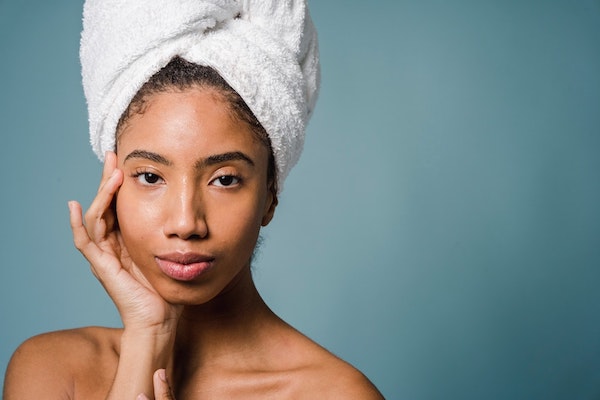Nowadays, cosmetic treatments for wrinkles are rapidly growing. Botox and dermal fillers are both long-term treatments used for wrinkles. Despite the availability of multiple over-the-counter drugs, the injectables’ popularity has been increasing for the last decade. Although Botox is still more mainstream in anti-aging skin treatments, dermal fillers are quickly catching up. Often the distinction between Botox vs. facial fillers might seem a little challenging, so if you are only beginning to look at injectables, it may feel confusing to figure out what’s right for you.
What Are Botox and Dermal Fillers Used For?

Botox and dermal fillers are injectables used for cosmetic procedures, usually in a doctor’s office. They are minimally invasive, which implies that surgery is not involved and can be used on facial wrinkles. However, that is where their similarities end.
Botox
Botox is an abbreviated term for botulinum toxin containing a purified neurotoxin produced by a bacterium called clostridium botulinum. In medicine, this toxin has been modified and divided into small doses to inhibit specific nerves’ activity, causing weakening of the muscle. It can be injected into desirable areas to block some nerves’ action. By weakening the muscle, it can smooth out lines and wrinkles. Botox is best used in facial expression areas such as the frown lines, crow’s feet, and between the eyebrows. Botox affects only dynamic wrinkles caused by facial expressions over the years. It does not influence wrinkles due to collagen break down and volume loss. However, Botox has other treatment uses such as excess sweating, hyperactive bladder, muscle weakness and spasms, TMJ, teeth grinding and migraines.
Dermal Fillers
Dermal Fillers are another category of cosmetic gel-like injectables aimed to add tissue volume. To restore volume, smooth fine lines, and soften wrinkles, or improve facial contours, dermal fillers are injected underneath the skin. They can be used to improve the appearance of the smile lines, lips, temples, hands, and cheeks to name a few. Nevertheless, dermal fillers’ application on other body areas, such as breasts or glutes, are not currently FDA approved. Dermal fillers’ results are temporary. Depending on the type of filler, results can last anywhere from six months to two years. However, their popularity has increased rapidly as they have dramatic results and are less expensive than surgery. Therefore, dermal fillers can be an alternative to surgery, considering that they are minimally invasive and do not require any recovery time. Dermal fillers are generally categorized based on the substance they are made from, such as collagen, hyaluronic acid, calcium hydroxylapatite, poly-L-lactic acid, and polymethylmethacrylate (PMMA). Among the mentioned filler types, Hyaluronic Acid is the most popular.
How Does the Procedure Work?
Both Botox and dermal fillers injections are straightforward outpatient treatments typically done without anesthesia and sporadically with local anesthesia. Botox and dermal fillers are carefully applied into the desired regions with a syringe. You will resume everyday routines without any required recovery time after the injections. Botox and dermal fillers both require maintenance injections once their results wear off.
Is Botox Effective?

Depending on your specific reaction to Botox and the brand, Botox will start affecting the targeted facial muscles between five to seven days. It can take up to two weeks for peak effect. Results last about three to four months. Botox can help reduce or, in certain cases, completely eliminate wrinkles.
Are Dermal Fillers Effective?
Dermal fillers are also temporary treatment options, although they last longer than Botox overall. The exact type of the used dermal filler affects the final results and the time they stay. Results last about 6 months to two years for the Hyaluronic Acid type and could last two to five years for poly-L-lactic acid (Sculptra) types.
Side Effects
While both Botox and dermal fillers are considered to be somewhat safe procedures, specific side effects like any other medical treatment may occur.
Botox Risks and Complications
Some patients may experience headaches, bruising at the injection site, drooping of the eyelid or brow, or rare allergic reactions. Experienced injectors like Dr. Zadeh take several safeguards to minimize the risk of complications.
Dermal Filler Risks and Complications
Dermal fillers’ side effects are usually rare and include bruising, swelling, lumpiness, and allergic reactions. Other extreme side effects are infrequent. Experienced injectors like Dr. Zadeh take several safeguards to minimize the risk of complications.
Which Treatment is Right for You?
Each dermal filler is uniquely designed to have a particular texture, density, and injection depth, ensuring that specific fillers perform better for certain desired areas. We currently use dermal fillers from Juvederm, Restylane, Voluma, Belotero, and Sculptra in our office. If you are in California and have your eye on skin rejuvenating procedures, schedule an appointment with highly experienced Dr. Zadeh. He will learn more about your cosmetic concerns and aesthetic goals and recommend the best-personalized treatment for you.

